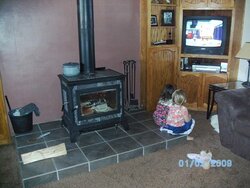I currently get some ridiculous amount of non-premium channels through my cable service which is bundled with phone and internet. The price for the television portion is supposed to be 55$. We have determined that we don't need this. I am intrigued by the concept that the over-the-air signal will be (is) digital and supposed to be of excellent quality. I used the antenna web site to determine that I have all of the importanta and major channel's towers broadcasting from about the same direction and between 25 and 40 miles away. Lots of channels are available according to the conservative site.
So I looked into antennas. Medium or large directional antennas and there are some decent ones out there that claim to be able to receive/produce strong signals from UHF and VHF stations up to 60 miles away. These things cost like 55$ which is the same as one month's cable bill.
Has anyone given up cable for the digital over-the-air transmissions? Any thoughts?
So I looked into antennas. Medium or large directional antennas and there are some decent ones out there that claim to be able to receive/produce strong signals from UHF and VHF stations up to 60 miles away. These things cost like 55$ which is the same as one month's cable bill.
Has anyone given up cable for the digital over-the-air transmissions? Any thoughts?


